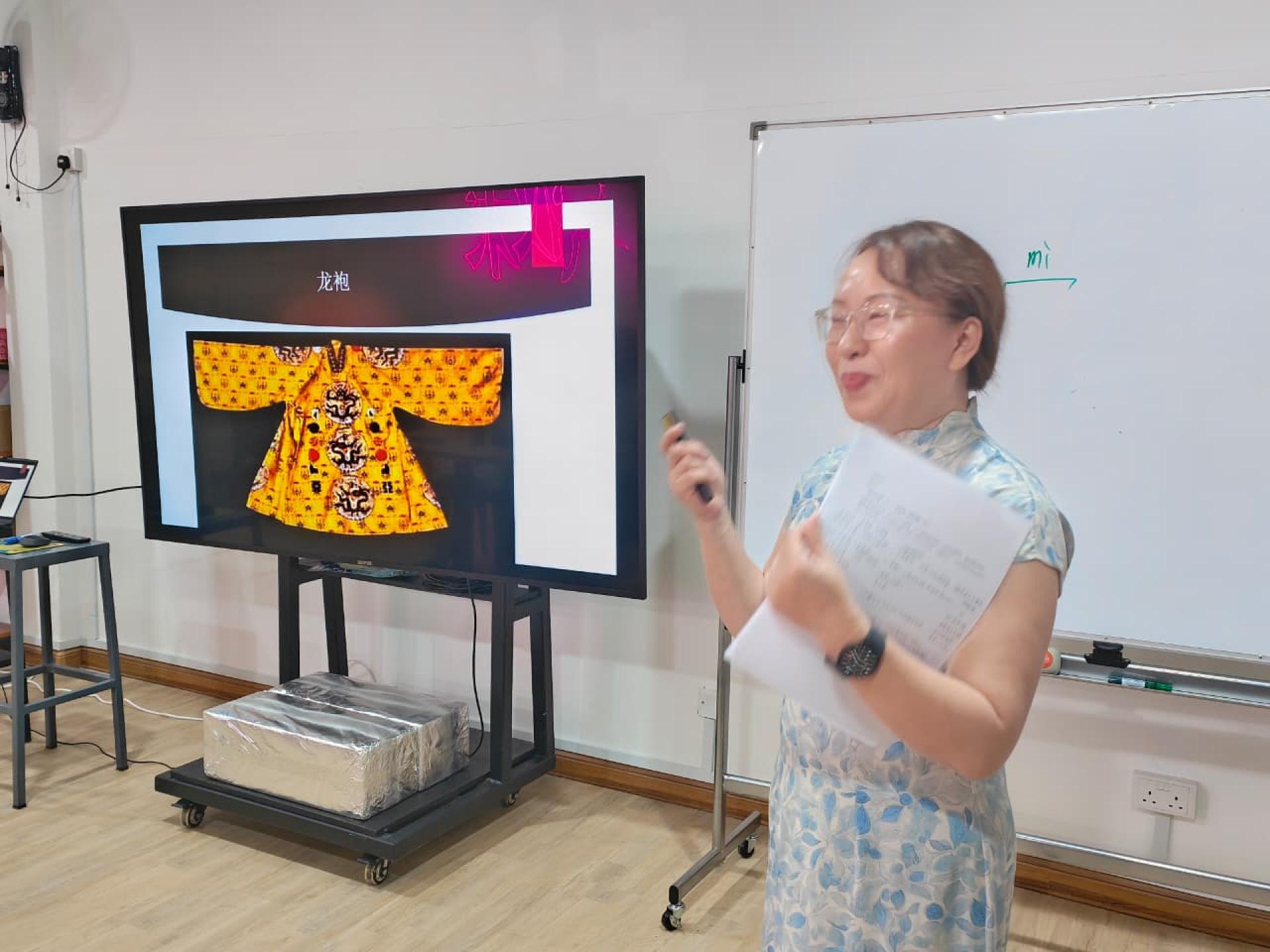(Sibu, 6th) Jide Care Association's “Cultural Classroom” recently invited teacher Pan Weifang to host a unique lecture on the history of clothing culture, titled “Attire of a Superior Nation: Land of Etiquette and Ceremony.”
The lecture, utilizing a wealth of graphic and textual materials, systematically traced the development of traditional Chinese clothing, not only showcasing the evolution of aesthetic tastes through the ages, but also revealing the social systems, economic development, national integration, and cultural philosophies behind the attire.
Pan Weifang began with “Costume and Culture,” providing a detailed explanation of the identity recognition and symbolic etiquette of China as the “Land of Attire and Hats.” She specifically introduced the ancient ceremonial dress regime, explaining how it manifested the hierarchical order and social class during rituals, court assemblies, and other important occasions. Through traditional coming-of-age attire such as the “Capping Ceremony” and “Hairpin Ceremony,” she unveiled the significance of clothing in symbolizing changes in personal status within life’s rites of passage.
The lecture followed five main dimensions—form, pattern, color, material, and accessories—to systematically analyze how Chinese attire serves as a “history of civilization worn on the body.” She pointed out that different patterns contain natural philosophy and auspicious meanings, colors express emotions as well as political messages, and the selection of materials—from Shu brocade to cotton and linen, from jade ornaments to “Songjiang cloth”—reflects technological progress, class distinctions, and the ingenuity of common life.
She emphasized that traditional Chinese clothing is more than an external decoration; it is a physical carrier of national spirit and ethical concepts. For example, jade accessories represent the value pursuit of “valuing virtues by comparing them to jade,” waist ornaments symbolize status and etiquette, and the evolution of folk clothing materials demonstrates the integration of textile technology and secular culture.
Pan Weifang remarked, “Clothing is a mirror that reflects a nation’s historical journey and spiritual world.” The entire lecture was detailed and clearly explained, backed by abundant imagery, guiding the audience to understand the philosophical concepts, social structures, and cultural metaphors hidden behind the visible forms of clothing.
The lecture sparked great enthusiasm among attendees, who remarked that through the course, they not only deepened their understanding of traditional clothing culture but also experienced the profoundness of Chinese civilization in everyday life. Traditional attire is like a flowing epic, with every detail carrying genetic codes of culture and imprints of the times, and Pan Weifang’s narrative served as the very key to unlocking this epic.
At the end, there was a Q&A session in which the audience eagerly participated, and exquisite “Chinese knots” were presented as souvenirs.
